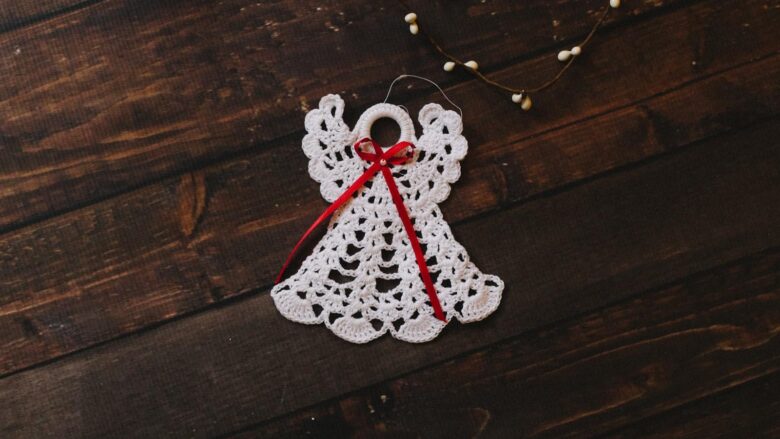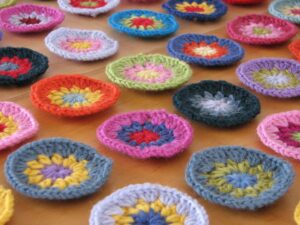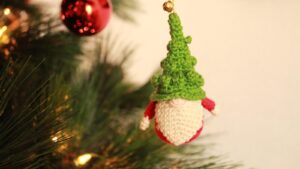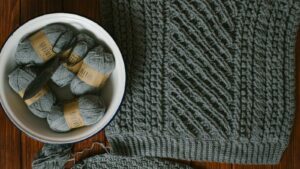Crocheting a scarf is a timeless craft that allows you to create a beautiful and cozy accessory to keep you warm during the cooler months. Whether you’re a beginner or an experienced crocheter, learning how to make your own scarf is a rewarding and fulfilling experience. In this article, we will guide you through the step-by-step process of crocheting a scarf, from selecting the right yarn and crochet hook to mastering different crochet stitches. So grab your supplies and get ready to unleash your creativity with this fun and practical project!
Selecting the Right Yarn and Crochet Hook
When it comes to crocheting a scarf, is crucial for achieving the desired outcome. The type of yarn you choose will greatly impact the final look and feel of your scarf, while the crochet hook size will determine the overall texture and drape of the finished piece.
Choosing the Right Yarn:
- Consider the weight and texture of the yarn for the desired warmth and style.
- Opt for a soft and cozy yarn for a winter scarf or a lightweight yarn for a spring accessory.
- Experiment with different fibers such as wool, acrylic, or cotton for various looks and feels.
Selecting the Crochet Hook:
- Match the hook size to the yarn weight for a balanced and even tension throughout the project.
- Choose a larger hook size for a looser and drapier scarf, or a smaller hook size for a tighter and denser fabric.
- Test different hook sizes with a sample swatch to determine the best combination for your preferred style.
Choosing the Ideal Stitch Pattern for Your Scarf
When it comes to crocheting a scarf, selecting the right stitch pattern can make all the difference. The stitch pattern you choose will not only affect the overall look of your scarf but also its warmth, texture, and drape. Here are some factors to consider when :
- Skill Level: Consider your skill level when choosing a stitch pattern. If you’re a beginner, opt for simple stitches like single crochet or double crochet. If you’re more advanced, you can experiment with more complex stitch patterns like cables or lace.
- Yarn Weight: The weight of your yarn will also impact the stitch pattern you choose. Bulky yarns work well with larger, more textured stitches, while finer yarns are better suited for delicate lace patterns.
- Intended Use: Think about how you plan to wear your scarf. If you want a thick, cozy scarf for cold weather, opt for a dense stitch pattern like seed stitch or basketweave. For a lightweight scarf to wear in the spring or fall, consider open lace stitches.
Experimenting with different stitch patterns can be a fun way to add variety to your crochet projects. Don’t be afraid to mix and match stitches to create a unique and personalized scarf that reflects your style. Remember, the beauty of crocheting is that there are endless possibilities, so have fun exploring different stitch patterns until you find the perfect one for your scarf!
Beginning Your Crochet Edge and Establishing Gauge
Before diving into your crochet project, it’s important to begin your crochet edge correctly to ensure a neat finish. Start by creating a slip knot and attaching it to your crochet hook. Then, work your first stitch as directed in the pattern. This initial edge will set the foundation for the rest of your scarf, so take your time to make sure it’s done properly.
Once you have established your crochet edge, it’s time to focus on establishing your gauge. Gauge refers to the number of stitches and rows per inch in your crochet project. To check your gauge, crochet a small swatch using the recommended yarn and hook size. Measure the swatch carefully to see if it matches the gauge specified in the pattern. If your gauge is off, try adjusting your tension or using a different hook size to achieve the correct gauge.
Remember, crochet is all about practice and patience. Don’t get discouraged if your first attempts don’t turn out as expected. Keep practicing your stitches and experimenting with different yarns and hook sizes until you find the perfect combination for your scarf. With time and dedication, you’ll be able to crochet a stunning scarf that you can be proud of.
Adding Texture or Fringe to Your Scarf
If you want to take your crochet scarf to the next level, consider adding some texture or fringe to it. Texture can give your scarf a unique and interesting look, while fringe adds a fun and playful element. Here are some ways to incorporate texture or fringe into your scarf:
- Bobble stitches: Bobble stitches are a great way to add texture to your scarf. These raised stitches create little bobbles that give your scarf a fun and bumpy feel.
- Crochet cables: Crochet cables are another way to add texture to your scarf. These stitches create a raised, twisted effect that can make your scarf look more intricate and detailed.
- Fringe: Adding fringe to the ends of your scarf can give it a bohemian and playful look. You can choose to make the fringe long or short, thick or thin, depending on the style you’re going for.
Experiment with different stitches and techniques to find the perfect way to add texture or fringe to your scarf. You can mix and match different methods to create a truly unique and personalized look. Don’t be afraid to get creative and have fun with it!
Finishing Touches and Blocking Your Completed Scarf
After you have completed crocheting your scarf, it’s time to add the finishing touches to give it a polished look. The first step is to weave in any loose ends using a yarn needle. Simply thread the needle with the yarn and weave it in and out of the stitches on the backside of the scarf to secure it in place. Trim any excess yarn carefully to avoid unraveling your hard work.
Next, blocking your scarf can make a world of difference in how it drapes and looks when worn. To block your scarf, you will need a blocking board or surface, rust-proof T-pins, and a spray bottle filled with water. Lay your scarf flat on the blocking surface and use the T-pins to pin it into place, stretching it slightly if needed to straighten out any uneven edges. Lightly mist the scarf with water and allow it to dry completely before unpinning it.
Once your scarf is dry, you can add any embellishments or edging to personalize it further. Consider adding fringe, tassels, or a decorative border to really make your scarf stand out. You can also experiment with different yarn textures or colors to create a unique and eye-catching scarf that perfectly suits your style.
Insights and Conclusions
As you finish up your first crocheted scarf, take a moment to admire your handiwork and the time and effort you put into creating something truly unique. Crocheting can be a rewarding and relaxing hobby that allows you to express your creativity through yarn and stitches. Whether you keep this scarf for yourself or gift it to a loved one, remember the joy that comes from creating something with your own two hands. Happy crocheting!



